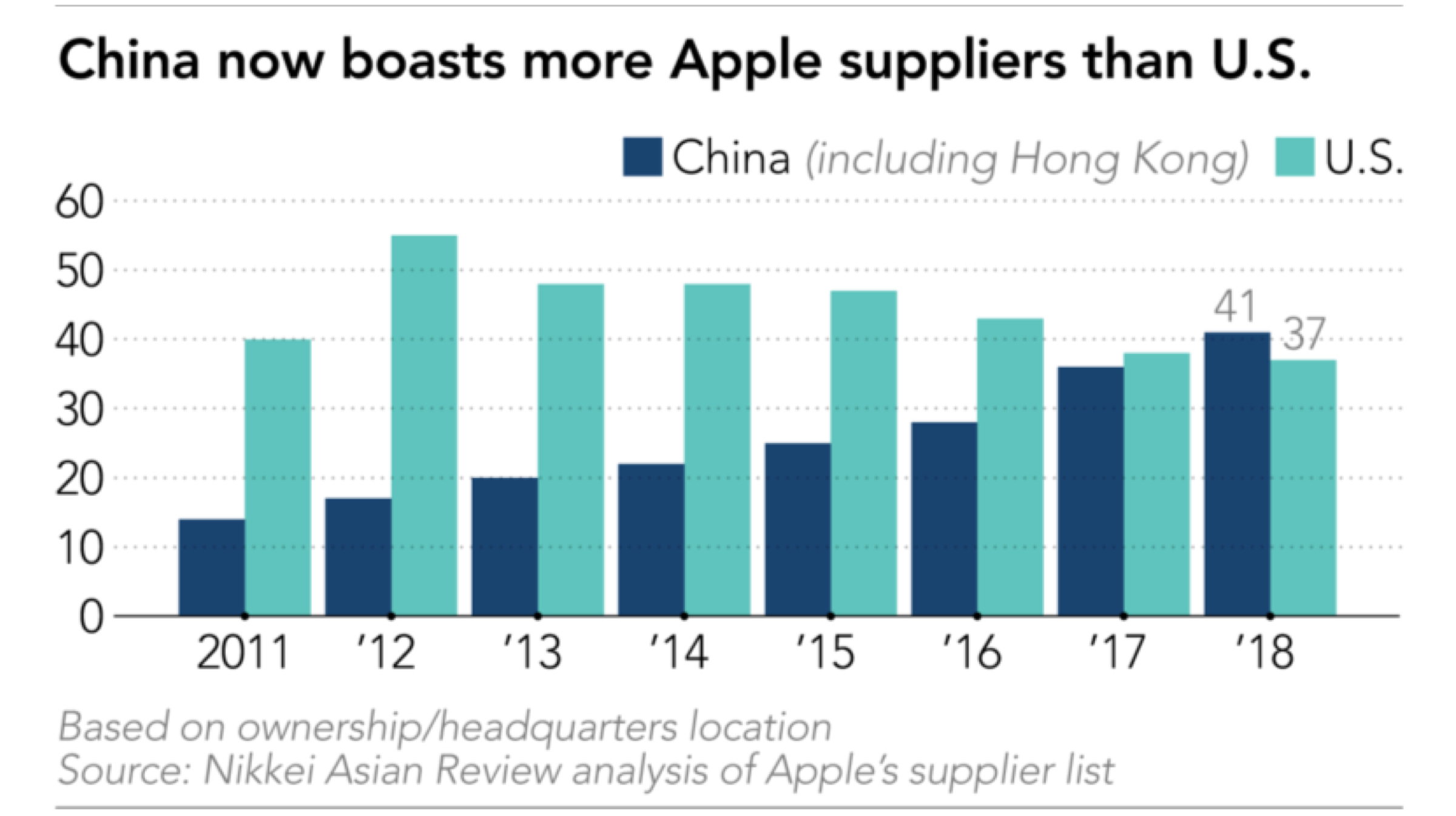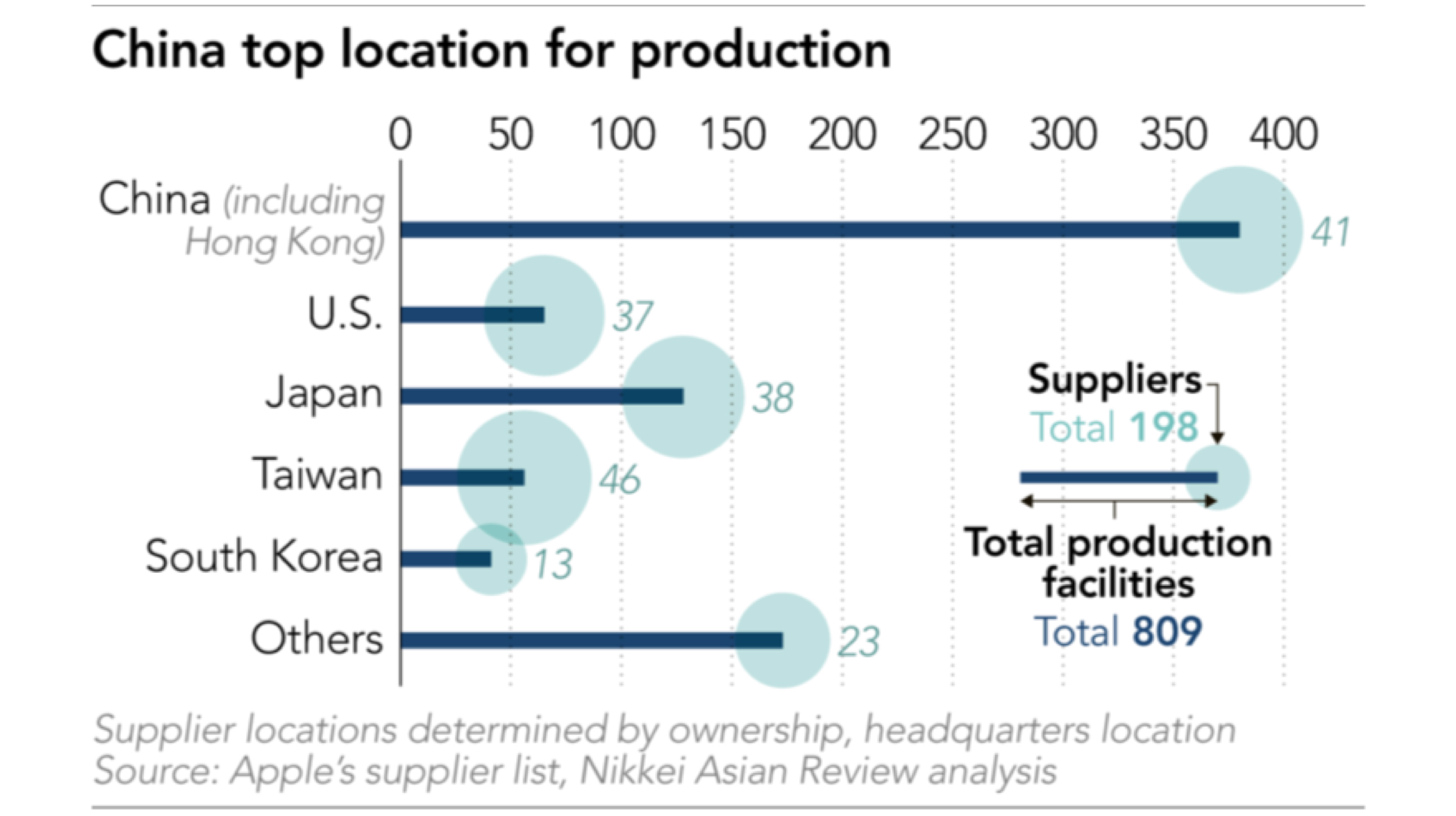Apple Downsizing Production In China

Tensions between the US and China regarding trade have had implications on a global scale. The trade ‘War’ has already claimed victims with Huawei, that is facing various restrictions on its business practice within America. Western corporations have been wary of collaborating with Huawei since the ban, fearing allegations and federal lawsuits. A fresh report reveals that Apple is currently seeking to shift a part of its production away from China. This arrives after China’s warning issued towards the US and certain internal issues faced by the company.
 Apple, like Huawei, is one of the companies that are vulnerable to the crossfire between the two nations. Due to the uneven ground between Washington and Beijing, the company is looking to shift a part of its entire production from the southeastern nation. The smartphone manufacturer has been planning diversification to other countries for a while now, citing issues from “high labour costs and risk of overly centralizing its production.”
Apple, like Huawei, is one of the companies that are vulnerable to the crossfire between the two nations. Due to the uneven ground between Washington and Beijing, the company is looking to shift a part of its entire production from the southeastern nation. The smartphone manufacturer has been planning diversification to other countries for a while now, citing issues from “high labour costs and risk of overly centralizing its production.”
 The countries being considered for such a large scale relocation to include India, Mexico, Indonesia, Malaysia, and Vietnam. Apple is currently leaning towards India and Vietnam in particular. Furthermore, older iPhones are already being produced in India which will help ease the transition since 90% of the Apple products currently available are still made in China. The company will move between 15-30% of all production, “with or without the final round of $300 billion tariffs.”
The countries being considered for such a large scale relocation to include India, Mexico, Indonesia, Malaysia, and Vietnam. Apple is currently leaning towards India and Vietnam in particular. Furthermore, older iPhones are already being produced in India which will help ease the transition since 90% of the Apple products currently available are still made in China. The company will move between 15-30% of all production, “with or without the final round of $300 billion tariffs.”
Also Read: Samsung Galaxy Note 10’s Display Will Double Up As A Speaker
Apple has seen global success owing to China as its main base of operations. However, the political strifes, unstable trade, and issues within the eastern countries demographics are pushing the company to reallocate the manufacturing process entirely. This event will turn out to be an extremely expensive move for the company, requiring an estimated 3 years as well. Notably, this will only seek to benefit the company in the long run and hopefully bring the economic price to developing countries.























